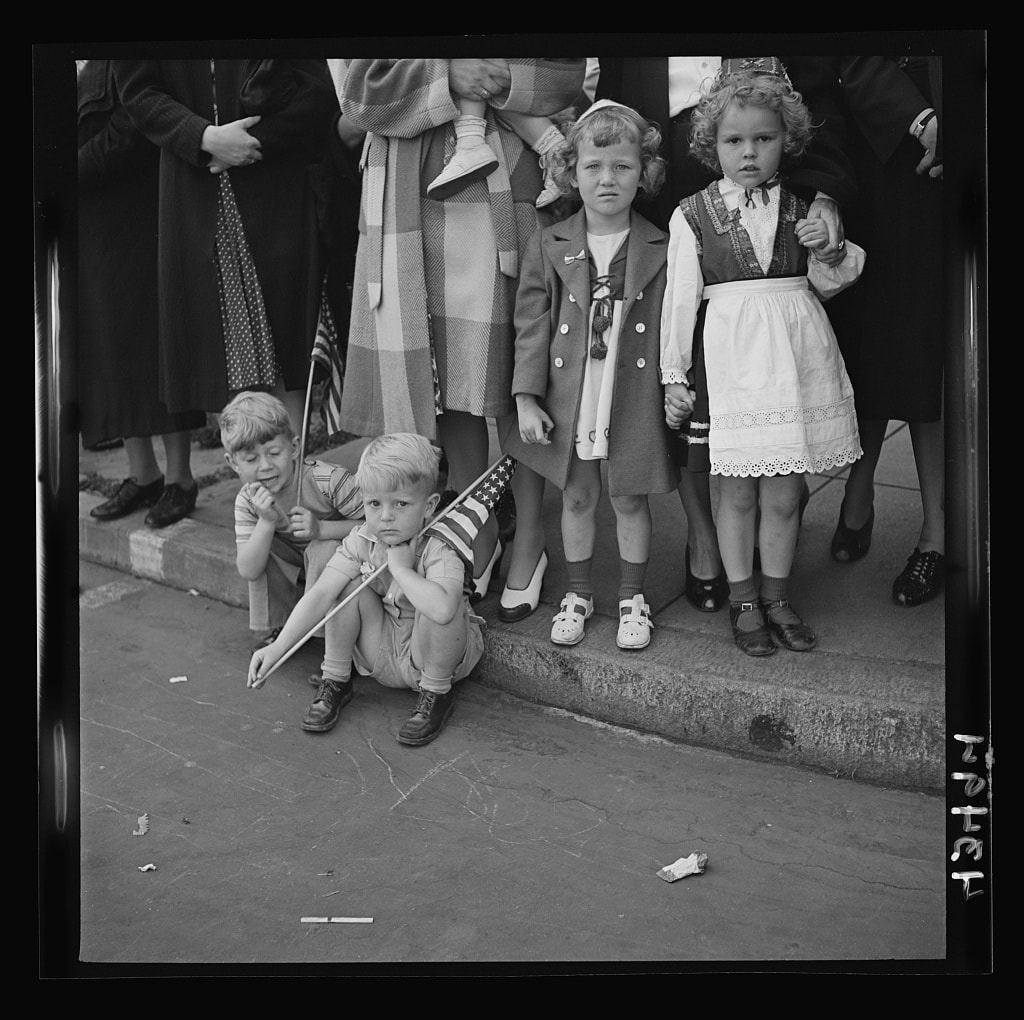Brooklyn-Queens Day: New York's Persistent Holiday
By Katie Uva
It’s the first Thursday in June! To most people, that means little more than that it is almost the first Friday in June, and that it was just the first Wednesday in June. But to New York City school children, it means Brooklyn-Queens Day, a gratuitous day off to go to amusement parks, run through sprinklers, and monitor the steady progress of ice cream melting down one’s face and arms. Nowadays, this holiday is a citywide phenomenon and has been renamed Chancellor's Day, but those of us old-timers who went to school before 2006 remember when Brooklyn-Queens Day used to be only for kids in Brooklyn and Queens, the one day of the year when kids in Manhattan actually envied us. But what is Brooklyn-Queens Day anyway?
Anniversary Day Parade in Brooklyn, 1920s. Library of Congress.
The holiday, which has also been known as Rally Day, Anniversary Day, and Brooklyn Day, marks the opening of the first Sunday school on Long Island. The Brooklyn Sunday School Union was founded in 1816, and the celebration of its anniversary began in 1829. Back then, Anniversary Day was held during the third week in May, and was traditionally marked by a day off from school and a parade in Brooklyn that drew thousands of children.
Anniversary Day became controversial at the turn of the century, when the consolidation of the boroughs into Greater New York put pressure on public schools in Brooklyn and Queens to stop giving their students a day off that public school students in the other boroughs did not get. The Brooklyn School Board tried to convince the Sunday School Union to move the holiday to a weekend so that public school students could participate without public schools risking their funding, but to no avail. In 1902, the holiday was discontinued for public school students. However, in 1905 the State Legislature passed a law allowing Brooklyn Day to continue in Brooklyn, while in Queens it became optional.
Children at an Anniversary Day Parade, 1944. Library of Congress.
Queens revived Brooklyn-Queens Day in the 1950s, when lobbying on the part of the Queens Federation of Churches caused Governor Nelson Rockefeller to officially reinstate Brooklyn-Queens Day in 1959. In that year, 150,000 children participated in parades in Brooklyn, and 25,000 participated in a series of parades in Queens. The law stated that Brooklyn-Queens Day must occur every year except in the case of an emergency; to date, that clause has been invoked only once, in 1994, when asbestos removal delayed the beginning of many schools throughout the city at the start of the 1993-1994 school year.
Brooklyn-Queens Day enjoyed raging popularity in Brooklyn and Queens and seething resentment in Manhattan, the Bronx, and Staten Island for the next 46 years. In 2005, after negotiations between the city and the United Federation of Teachers, Brooklyn-Queens Day was extended to all five of the boroughs, with the first citywide holiday occurring in 2006. Renamed Chancellor's Day, it is now a day that all New York City school children can enjoy.
The history of this anomalous little holiday is a long one that touches on the rise of public schools, the consolidation of New York, Brooklyn’s continued quest for its own identity within the larger city, questions of religious observance in public schools, and the relationship between Brooklyn and Queens. Most striking is how its meaning has morphed and changed over the years, from a Protestant celebration of Sunday schools in the 19th century, to a 20th century celebration of Queens and Brooklyn pride to the present day, when for the vast majority it has become a simple celebration of sleeping late and not doing homework.
Katie Uva is a Gotham editor, founding member of The Graduate Center's Public History Collective, and an educator at The Museum of the City of New York.

